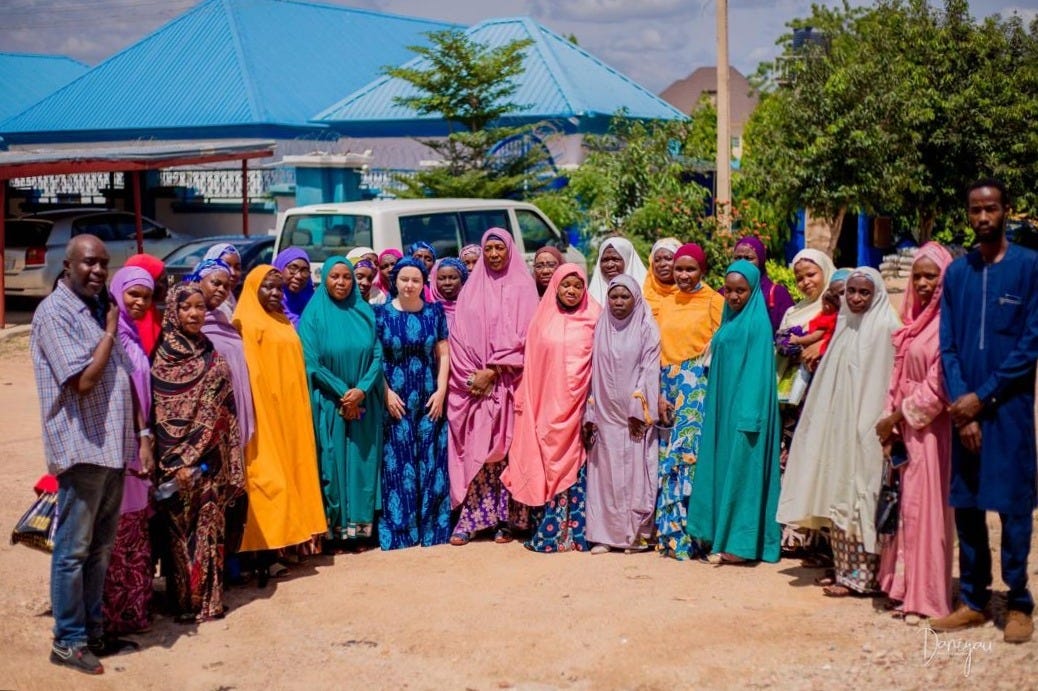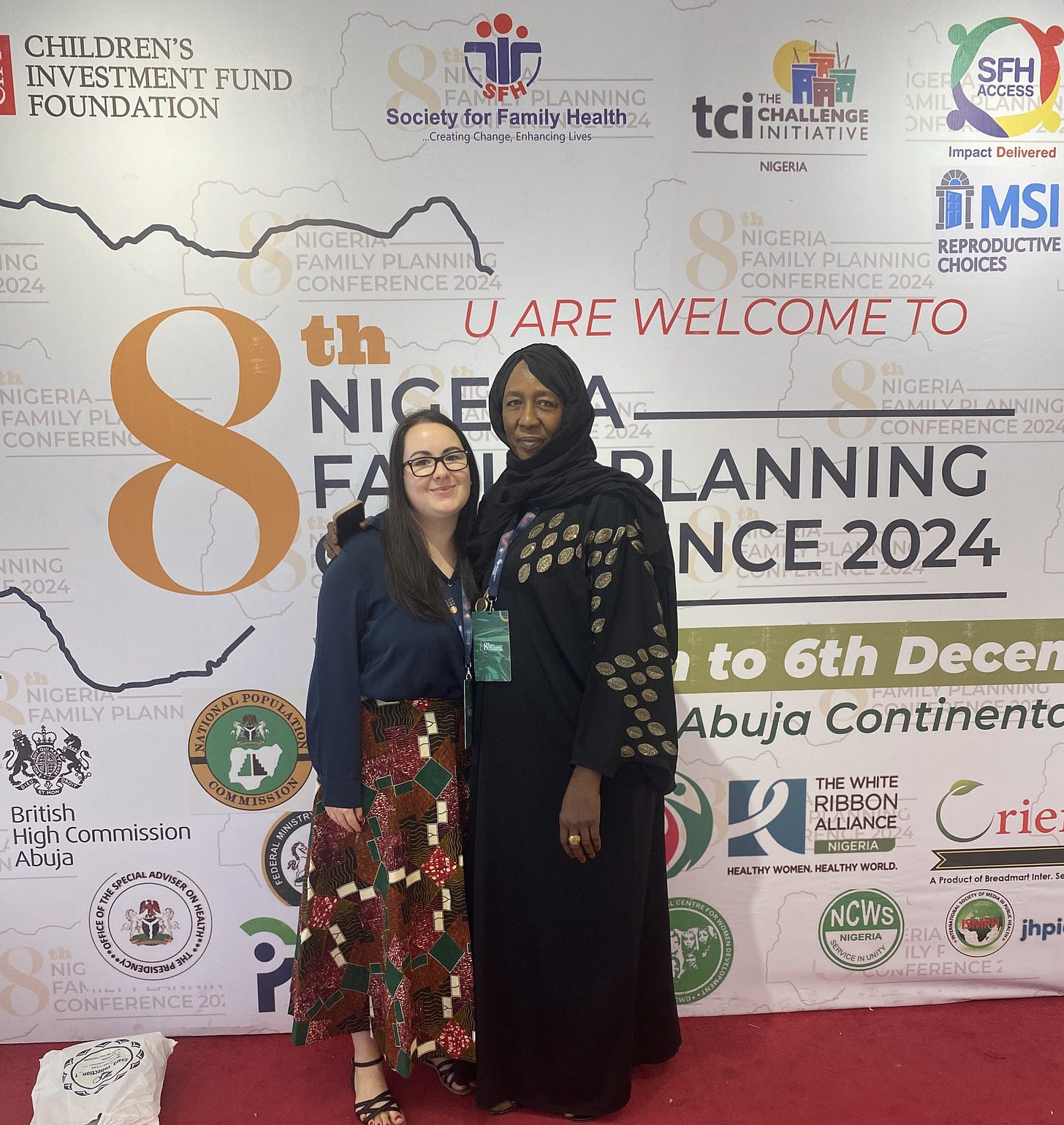Hello! Thank you so much for subscribing to our newsletter. We are thrilled to share more about us and the progress we've made in our mission to improve contraceptive access and reproductive health outcomes.
The Importance of Contraceptive Access
Contraceptive access gives women autonomy over their body and allows them to pursue education, start a career, or simply take care of their existing family. Studies consistently show that when women gain access to contraceptives, economic growth follows. Globally, every US$1 invested in family planning yields more than US$8 in benefits for families and societies. Most importantly, in a country with the third highest maternal mortality rate in the world, contraceptives save lives.
In Nigeria, inconsistent availability of modern contraceptives is a pressing issue, contributing to high rates of unintended pregnancies. Despite significant demand, many public health facilities regularly experience complete stockouts of key contraceptives, such as implants and injectables.
Access to Medicines Initiative aims to eliminate supply chain issues as a barrier to access by streamlining data collection, optimizing distribution, and filling gaps in procurement. We seek to create sustainable systems that ensure continuous availability of family planning commodities in public health facilities. This will improve health outcomes for mothers and infants, as well as help create economic opportunities for women and their families.
Our Pilot Project
We are conducting a 6 month pilot in order to identify
the specific problems within the contraceptive supply chain,
the impact of these problems on contraceptive usage, and
the most cost-effective solutions that we can transform into concrete policy.
To diagnose supply chain issues, we are collecting stock and consumption data in around 140 public health facilities across 9 Local Government Areas (LGAs) in Katsina state and Sokoto state, Nigeria. We will use this data to determine to what extent stockouts are caused by a shortage of contraceptives, a misallocation of resources, or other factors.
To measure the impact of these supply chain issues, we are providing additional contraceptives to some of the facilities in each state. By measuring the change in consumption due to this additional stock compared to previous periods and to the facilities not receiving additional commodities, we will gain a better understanding of how stockouts impact contraceptive consumption.
Finally, we are testing different pathways to build scalable and sustainable solutions. For example, we are testing a mobile-based data collection system to improve data visibility within the contraceptive supply chain. As we gain more precise data, we are working alongside those responsible for distributing contraceptives in each LGA to improve the accuracy of their allocations. These tests will provide a more holistic picture of what types of interventions are most viable in each local context.
Key Milestones and Achievements
Our intervention has made significant progress since its inception. Here is an overview of our key activities so far:
Incorporation: We successfully incorporated in the US and have received 501(c)(3) status.
Scoping Visit: We conducted a visit to Nigeria to meet with stakeholders and understand the local landscape. During this visit, we formalized our collaboration with the Katsina State Government by signing a Memorandum of Understanding (MOU).
Scoping Projects: We ran data collection projects with four implementation partners across four states. This ultimately led us to select Sokoto as our second pilot state.
Relationship building: We have connected with numerous government officials, traditional leaders and NGOs from across Nigeria, as well as with key providers of Family Planning commodities on the private market.
Pilot Launch
We deployed a mobile-based data collection system allowing us to collect data directly from facility health workers via SMS and WhatsApp. In September and October, we conducted training sessions with health workers from all pilot health facilities together with our local implementation partners. All participating facilities receive monthly airtime stipends and have access to ongoing support.
All health facilities have been divided into 3 reporting groups, allowing us to test the compliance and accuracy of multiple reporting methods.
We recruited Monitoring and Evaluation (M&E) officers to gather consumption and stock data from every enrolled facility in both Katsina and Sokoto states. This data is then cross referenced against the data reported directly by health facilities.
We are monitoring and analyzing an ongoing stream of data from participating health facilities and relevant government stakeholders, and making this data available to relevant government stakeholders to inform their decisions.
We recently donated our first batch of contraceptives and medical consumables to 23 health facilities within 2 LGAs in Katsina state, based on consumption data we collected in our first round of M&E checks. More donations of contraceptives will follow in early 2025.

Preliminary Findings
Our early data shows promising results. An analysis of historical data suggests that contraceptive consumption increases by as much as 50% when facilities avoid stockouts. This significant increase highlights the importance of maintaining a consistent supply of contraceptives to meet demand and improve family planning outcomes. However, these results are correlational rather than causal, and we are collecting additional data to validate them.
Based on the same preliminary analysis, we found that some LGAs would have to reallocate more than half of their contraceptives in order to match demand. In addition, we have seen some evidence within our pilot data that suggests that large facilities, particularly hospitals, receive a large stock of contraceptives while smaller facilities are stocked out. This suggests that contraceptive stockouts could be caused by misallocation. However, it is likely that several factors combined lead to stockouts, and we are continuing to investigate this question further.
Looking Ahead
While our long-term strategy continues to evolve based on the results of our pilot, we are energized by the opportunities for innovation and improvement. We are currently planning on a series of small scale projects in early 2025, testing various approaches our research has identified so far. We remain committed to continuously refining our methods to ensure the greatest possible impact, ultimately improving reproductive health outcomes and economic opportunities for women and their families across the country.
Get Involved
Volunteer: We are about to undergo a data digitization project as part of our pilot, and we are looking for volunteers to support this work. If you are interested in volunteering with us, please contact Evan LaForge at evan@accessmedicines.org.
Feedback: If you have experience with policy/advocacy work in LMICs or otherwise believe you can offer advice on our intervention, we would greatly appreciate hearing from you. If you are interested, please contact Miri Muntean at miri@accessmedicines.org.
Donate: If you would like to donate to support our work, you can do so at the following link: https://www.every.org/access-to-medicines-initiative. If you are considering a large contribution or have any questions before donating, we encourage you to contact Evan LaForge at evan@accessmedicines.org.
We are very grateful for your continued support!






